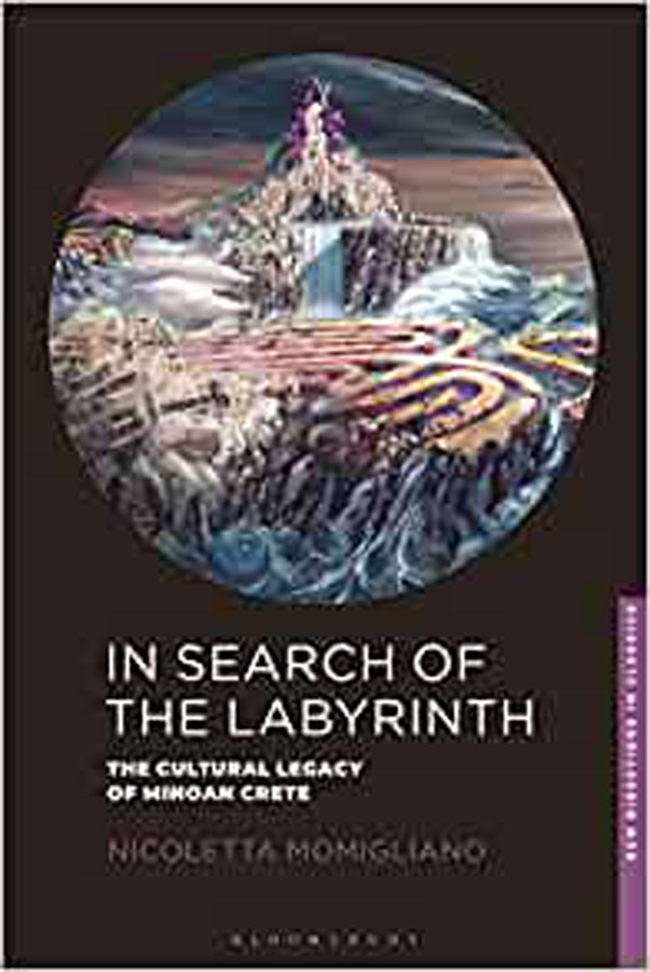
The subject matter of the book is the reception of the archaeological finds in Minoan Crete across literature, art, and other media. It examines responses to Minoan archaeology from antiquity to the twenty-first century, focusing though on the twentieth century. The book is organised in seven chapters. There is a chronological table available in the preface which guides the reader through the different ages of the Minoan civilisation the author refers to. As Momigliano explains, her choice of responses to the Minoans is based on engagement with the archaeological finds of Minoan Crete. This choice results in a fascinating discussion of novels, poems, paintings, travel texts and films that help us appreciate archaeology in a continuous dialogue with cultural production. Momigliano acknowledges the heterogeneity of the material she examines in the preface; yet, as she suggests in the Introduction (Chapter 1), it is precisely the vast collection of artistic and literary responses to Crete of the Bronze Age that contributes to the modern ‘cultural legacy of Minoan Crete’ that the title promises. The legacy of Minoan civilisation, argues the author, goes beyond the archaeological remains and includes the different interpretations and transformations of these remains in modernity.
In Chapter 2 the author maps out early responses to the Minoans before the excavations in Knossos and Phaistos in 1900, starting from the relationship of ninth century Crete with ancient Egypt, Mesopotamia, Anatolia, and Mycenae. Momigliano moves on to provide an overview of the famous myths surrounding Crete, addressing at the same time misconceptions about Minoan culture which emerged with the excavations. She also underlines the tendency of the nineteenth century scholarship to connect myths to archaeological finds, something that both Schliemann and Evans were prone to do. Chapter 3 provides a historical account of the famous archaeological discoveries by Schliemann and Evans towards the end of the nineteenth century in Mycenae and Crete and explores the enthusiastic European responses to the Minoan finds until 1914. Continuing with the idea of the Minoan civilisation as Europe's ancestor, Chapter 4 looks at the impact of Minoan Crete on the European collective imagination by turning to literature, history and art. Momigliano emphasises the diversity of the responses the Minoan past attracted from the mid-twentieth century until 1949. These interpretations of Minoan Crete incorporated issues of race, colonialism, decadence, femininity, and otherness. Chapter 5 covers the third quarter of the twentieth century, suggesting that despite the continuing excavations in Crete and Thera as well as the decipherment of Linear B, the cultural responses to the Minoans continued to address the opposition between Mycenae and Minoan Crete. Chapter 6 focuses on the last quarter of the twentieth century, examining the suggestion that the Minoans practised cannibalism and human sacrifice, and discusses the considerable number of cultural responses to this unexpected suggestion. The author looks at examples from fiction, poetry, fashion, film, advertisements, and ballet performances amongst others. The twenty-first century responses to the Minoans are presented in the last chapter, demonstrating the everlasting influence of Minoan Crete in modern times.
The book's main contribution to Classics is the broad perspective it offers regarding the reception of Minoan Crete and its material culture across media by carefully considering the developments in archaeological excavations and the historical context of each period. Momigliano's examples of ‘Cretomania’ and thorough research on the archaeological finds immerse the reader into the narratives about Minoan Crete. The book would be suitable for teachers of Classical Civilisation, especially in the thematic study of Myth and Religion. It is a study rich in illustrations of archaeological finds and their modern interpretations, many of which could be used in both GCSE and A Level Classical Civilisation. Due to its writing style and level of critical engagement with archaeology, the book would be a welcome addition to a Classics Department library, and it would be valuable reading for undergraduate students in the field of Classics.


